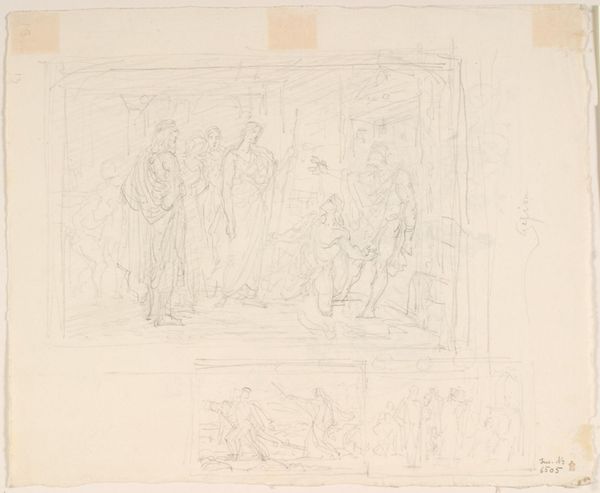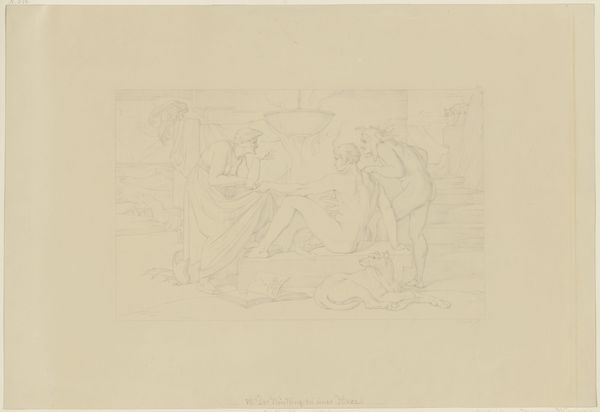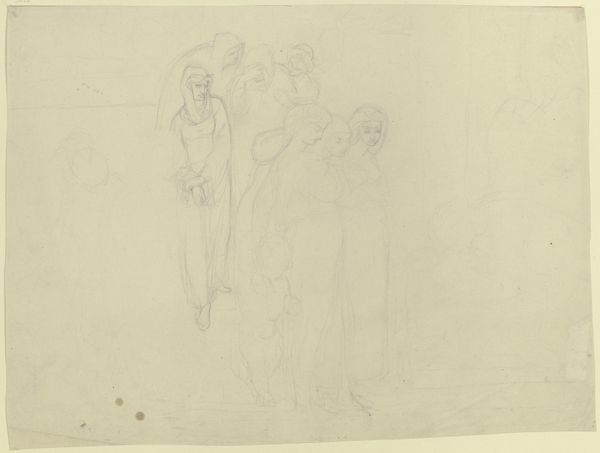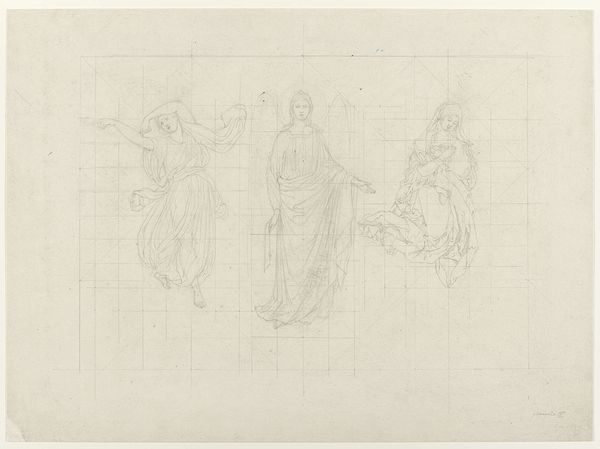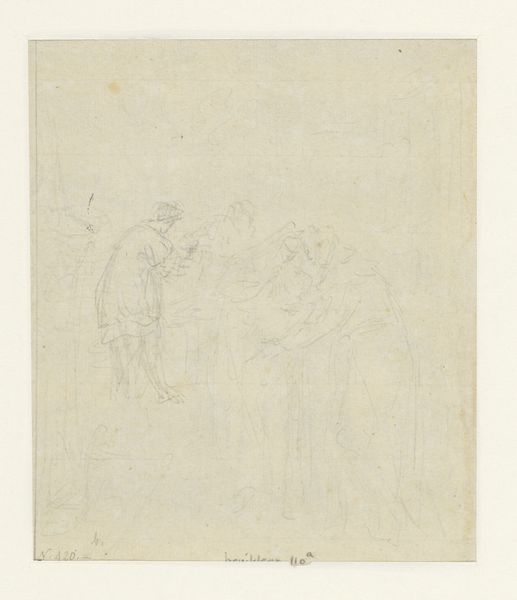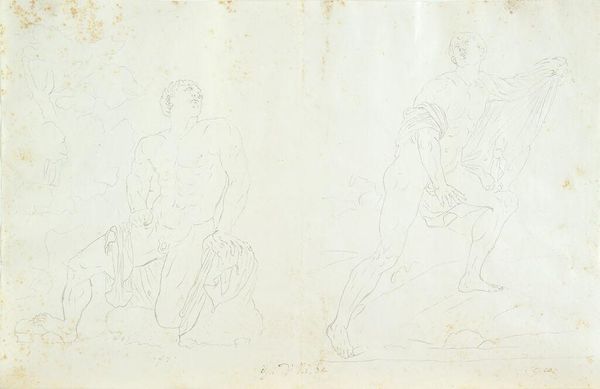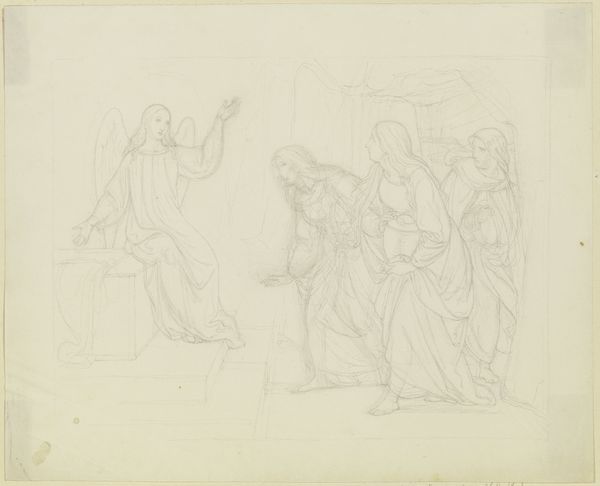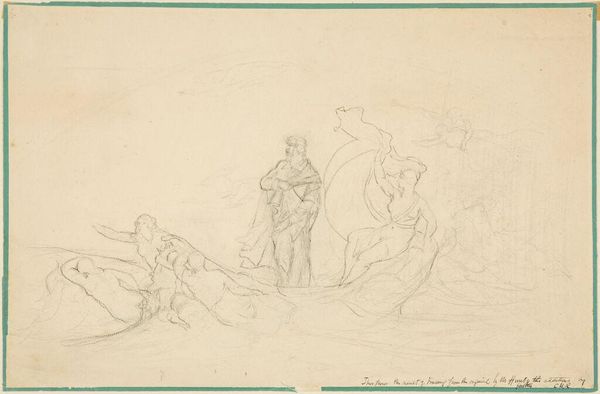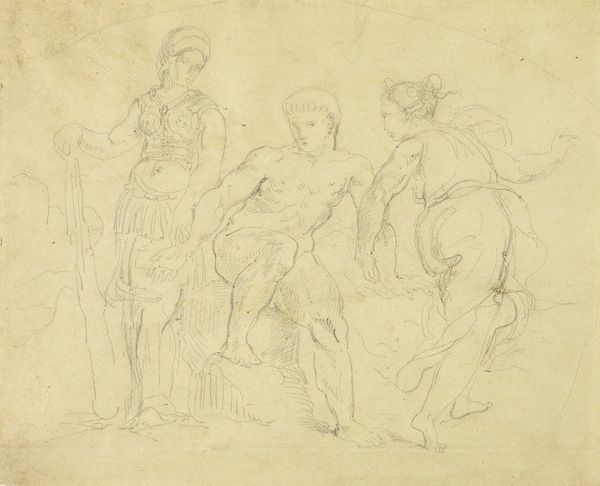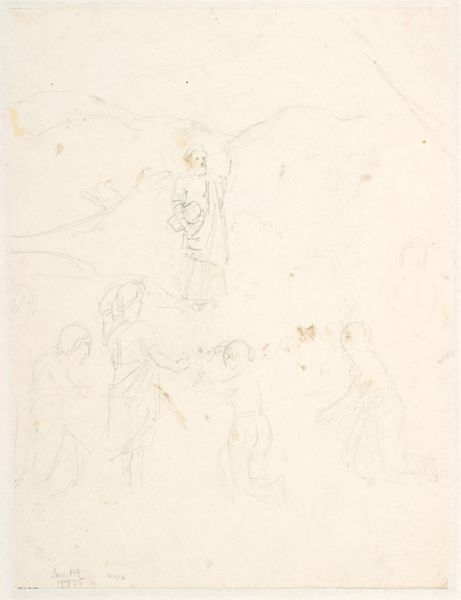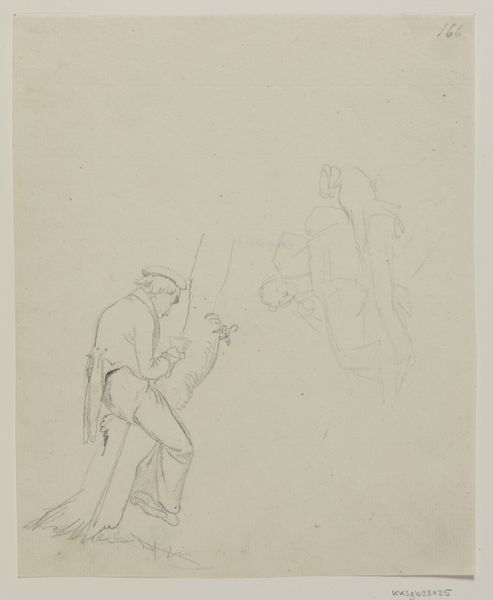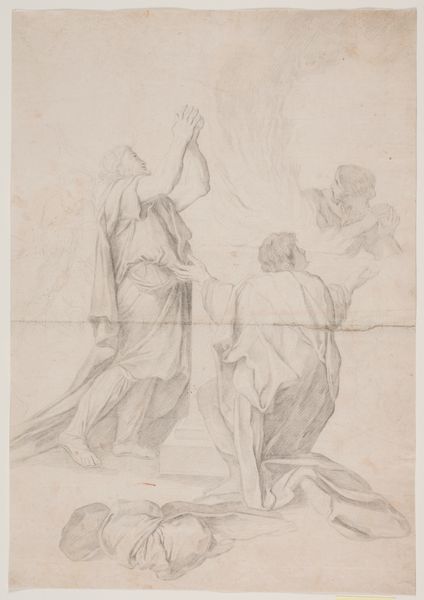
drawing, pencil
#
drawing
#
figuration
#
pencil
#
history-painting
#
academic-art
Dimensions: 392 mm (height) x 165 mm (width) (bladmaal)
Curator: Well, here's something that feels like a secret whispered from history. What we have is a preparatory sketch, titled *Kristus kalder Petrus, kompostionsudkast* – Christ Calling Peter, compositional draft – dating from between 1831 and 1852, by Dankvart Dreyer. Editor: It has this ethereal quality about it, like a half-remembered dream, sketched quickly before it fades entirely. Everything is so delicate, a light touch on the paper with a pencil. Curator: Precisely! And you see it’s at the SMK, the National Gallery of Denmark. Made purely with pencil, which enhances that ghostly quality, I think. The academic style makes sense, it seems Dreyer made a number of history paintings as part of his study in the Copenhagen academy, which later influenced his landscapes. It captures this pivotal moment in Christian lore. Editor: Absolutely, the moment of calling and being called. I wonder about the social context; fishing as a form of labour and class, especially within religious iconography, how Peter’s transition becomes one of spiritual and, perhaps, social ascendance. How might such an image land with various audiences then, versus today? Curator: It’s a poignant inquiry into power dynamics through the lens of faith. Dreyer wasn't merely depicting a biblical story; he was probing the undercurrents of belief, choice, and transformation. Notice how Christ's stance is powerful, with a slight hint of supplication, whereas Peter looks a bit nervous, a touch apprehensive about the implications of such a request. Editor: Indeed, and one can feel that tension emanating from the seemingly simple pencil strokes. But let's also remember the potential gendered dimension in this divine invitation to a spiritual mission that arguably, then as now, tends to reward forms of patriarchal rule and thought. Curator: Good point, and perhaps worth an essay for a larger publication, because with just this simple pencil we can uncover some big problems about faith, doubt, gender and power. And the more we see, the more questions come forth. Editor: Indeed! Dankvart Dreyer gave us much more to ponder in this seemingly simple sketch than one might expect.
Comments
No comments
Be the first to comment and join the conversation on the ultimate creative platform.

